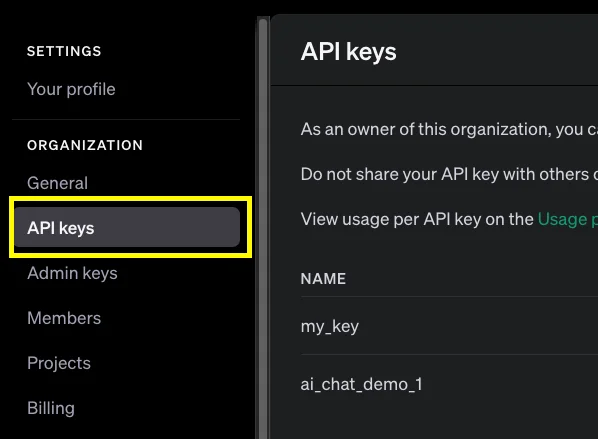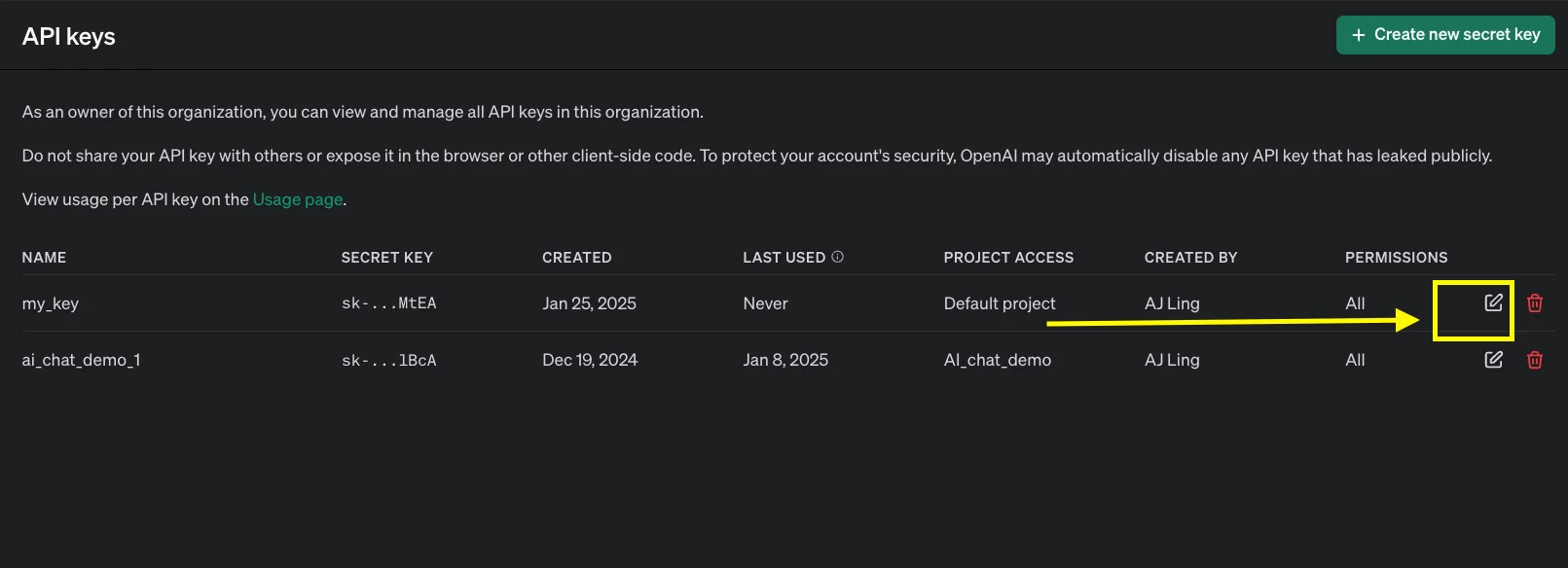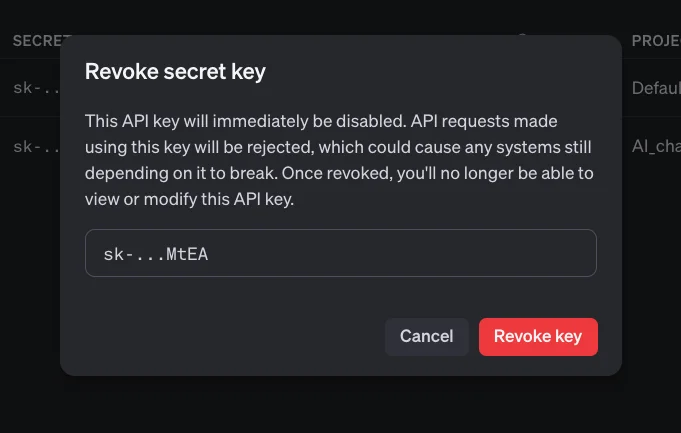Managing your OpenAI API keys effectively is crucial to ensure security and control over your API usage. This article will guide you through the steps to restrict and delete OpenAI API keys, helping you maintain a secure environment for your projects.
Why Manage API Keys?
API keys are the gateway to your OpenAI account and services. Mismanagement of these keys can lead to unauthorized access, misuse, or excessive charges. By managing keys responsibly, you can control access to your API resources, limit exposure in case of a compromised key, and monitor and track API usage effectively.
Step 1: Log in to OpenAI
Log in to your OpenAI account by visiting OpenAI’s platform website. Enter your credentials to access the API management features.
Step 2: Navigate to the API Keys Page
Once logged in, click on the Settings icon (the gear) in the top-right corner of the screen. Next, look at the left sidebar and select "API Keys" from the list. This will take you to the API key management page where you can manage your keys.

Step 3: Restrict an API Key
Restricting an API key involves setting rules or limits to control its usage. Locate the API key you want to manage in the list of keys on the API management page, then click on the associated edit icon:

Set restrictions such as restricting access to certain endpoints or models, or setting usage quotas or rate limits if supported. After configuring the restrictions, save the changes to enforce them.

Step 4: Delete an API Key
If an API key is no longer needed or is compromised, deleting it ensures that it cannot be used further. On the API keys page, find the key you want to delete and click the "Delete" button next to it.

Confirm the deletion in the popup dialog box, keeping in mind that this action is irreversible and any applications using the key will lose access to the API.
Best Practices for API Key Management
- Use unique keys for each application to isolate and monitor usage effectively.
- Regularly rotate keys to enhance security by deleting old ones and generating new ones. Monitor your API usage through the OpenAI dashboard to detect unusual activity and take action if needed.
- Keep your API keys secure by storing them in a password manager or another safe location, and never hard-code them into your application.
- Audit permissions regularly to ensure they are still appropriate for your current needs. Limit privileges by granting API keys only the permissions they need to function, avoiding keys with full access unless absolutely necessary.
Importance of Monitoring API Keys
- Track Usage Patterns: Use the OpenAI dashboard to identify which keys are being used most frequently and for what purposes. I
- dentify Anomalies: Look for unexpected spikes in API usage that may indicate misuse or a security breach.
- Set Alerts: Configure alerts for unusual activity or usage that exceeds predefined limits, if supported.
Responding to Security Incidents
Revoke Access Immediately: Delete the compromised key from your API management page. Investigate the Breach: Determine how the key was exposed to prevent future incidents, which may involve reviewing logs, updating application code, or improving storage practices. Replace the Key: Generate a new key for affected applications and update your code to use the new key securely.
Conclusion
Proper management of OpenAI API keys is essential to protect your account and ensure efficient usage of the API. By restricting and deleting keys as necessary, implementing best practices, and monitoring usage, you can minimize security risks and maintain control over your projects.
Take the time to review your API keys regularly and implement best practices for secure and effective management.






